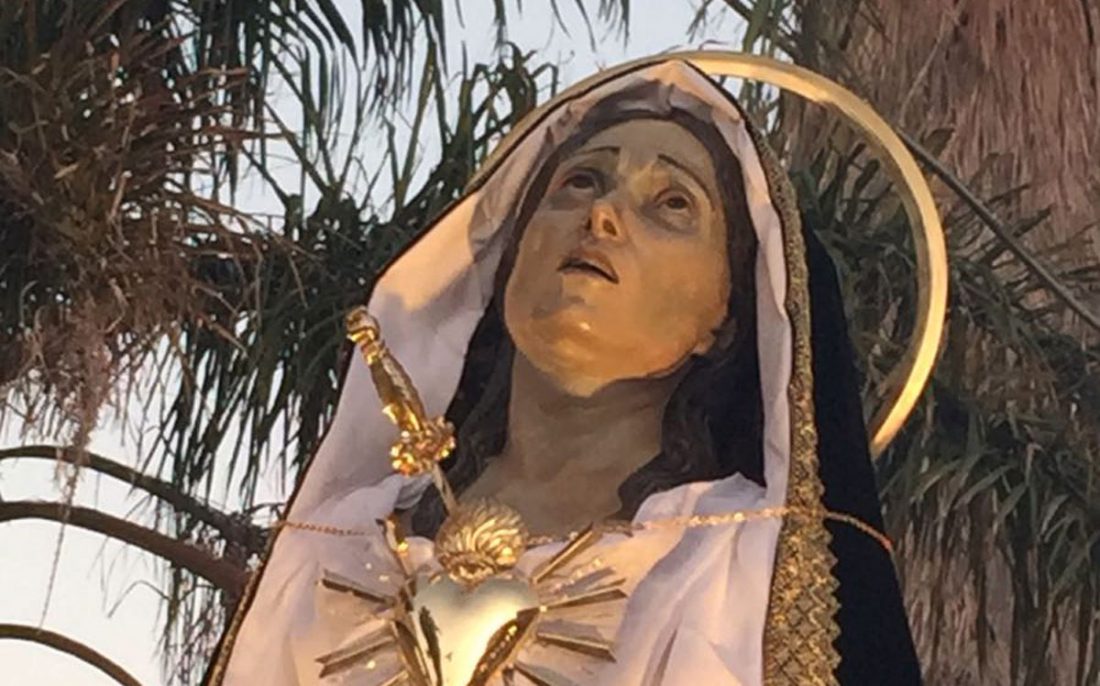Devotions: the via Matrix and the pains of Maria Santissima
The Via Dolorosa di Maria
Modeled on the Via Crucis and flourished from the trunk of devotion to the "seven sorrows" of the Virgin, this form of prayer germinated in the century. XVI progressively imposed itself, until it reached its present form in the century. XIX. The Via Matris is the painful pilgrimage of faith of the Mother of Jesus, along the life span of her Son and sealed in seven stations:
FIRST STATION Mary accepts the prophecy of Simeon l in faith (Lk 2,34-35)
SECOND STATION Mary flees to Egypt to save Jesus (Mt 2,13: 14-XNUMX)
THIRD STATION Most Holy Mary searches for Jesus who remained in Jerusalem (Lc 2,43-45)
FOURTH STATION Holy Mary meets Jesus on the Via del Calvario
FIFTH STATION Most Holy Mary is present at the crucifixion and death of her Son (Jn 19,25-27)
SIXTH STATION Most Holy Mary welcomes the body of Jesus laid down from the cross in her arms (cf Mt 27,57-61)
SEVENTH STATION Mary Most Holy places the body of Jesus in the sepulcher awaiting the resurrection (cf Jn 19,40-42)
The Via Matris
Associated in the salvific project of God (cf Lk 2,34: 35-XNUMX), Christ crucified and the Virgin of Sorrows are also associated in the Liturgy and popular piety.
Like Christ he is the "man of sorrows" (Is 53,3: 1), by means of which it pleased God "to reconcile all things to himself, reconciling with the blood of his cross [...] the things that are on earth and those of the heavens "(Col 20:XNUMX), so Mary is the" woman of pain ", whom God wanted associated with her Son as mother and participant in her Passion.
From the days of Christ's childhood, the life of the Virgin, involved in the refusal of which her Son was the object, passed, all under the sign of the sword (cf Lk 2,35:XNUMX). However, the piety of the Christian people identified seven main episodes in the painful life of the Mother and characterized them as the "seven pains" of the Blessed Virgin Mary.
Thus, on the model of the Via Crucis, the pious exercise of the Via Matris dolorosae or simply Via Matris, also approved by the Apostolic See (cf Leo XIII, Apostolic Letter Deiparae Perdolentis. , but in its present form, it does not go back beyond the 2,34th century. The fundamental intuition is to consider the whole life of the Virgin, from the prophetic announcement of Simeon (cf. Lk 35: XNUMX-XNUMX) up to death and burial of the Son, as a journey of faith and pain: journey articulated precisely in seven "stations", corresponding to the "seven pains" of the Mother of the Lord.
The pious exercise of the Via Matris harmonizes well with some themes of the Lenten itinerary. In fact, being the Virgin's pain caused by the rejection of Christ by men, the Via Matris constantly and necessarily refers to the mystery of Christ suffering servant of the Lord (cf Is 52,13-53,12), rejected by his people (cf Jn 1,11:2,1; Lk 7: 2,34-35; 4,28-29; 26,47-56; Mt 12,1-5; Acts XNUMX-XNUMX). And it still refers to the mystery of the Church: the stations of the Via Matris are stages of that journey of faith and pain, in which the Virgin preceded the Church and which she will have to travel until the end of the centuries.
The Via Matris has as its maximum expression the "Pietà", an inexhaustible theme of Christian art since the Middle Ages.
